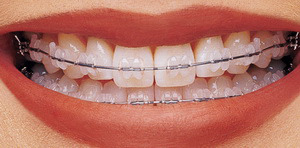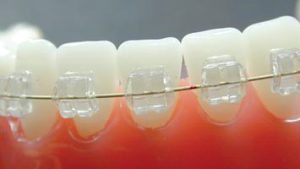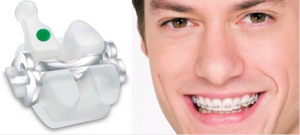 There are now a number of options for consumers to straighten misaligned or wrongly angled teeth.
There are now a number of options for consumers to straighten misaligned or wrongly angled teeth.
You can have the traditional metallic braces which are proven to do the job but are plagued with a few unwanted disadvantages such as looking unsightly when smiling apart from clinically causing tooth decay and shortening of tooth roots.
One of the better options out there is using ceramic braces made of composite materials.
They come in varying levels of transparency so you have ceramic brace that can take on the natural color of the teeth or are thoroughly translucent to be called clear ceramic braces and they do not stain. Most adults prefer ceramic braces because they blend in with the color of the teeth and are cosmetically less noticeable than metal.

Clear ceramic braces are made of ceramic alloys. Because of their transparency, they also have a great following, especially among adults who are to correct their buckteeth but without shouting to the world, they’re being corrected every time they smile. In addition to the clear ceramic brackets, there are two types of brace wires or ties that can make them more inconspicuous. The ties are made up of either clear elastic ties or white metal ties. The metal ties provide a stronger bind but tend to lose the white coating over time. The main edge of ceramic braces is their aesthetic and cosmetic appeal.
The ceramic brackets do not stain but the clear elastic wires or ties holding the brackets to your teeth stain, especially if you smoke, eat a lot of curry or drink loads of coffee. But these ties are changed every time an adjustment is made, usually, monthly.

• Everyone knows that ceramic is used in dinnerware and resemble glass in both hardness and brittleness. Hence, they are less resilient or absorbent to shock abuse or force than metal braces. Whether clear or not, ceramic braces are more brittle and sensitive to shock so that they can break, chip or fracture easily. Most dentists would caution applying them in teeth that are often used for chewing food.
• Ceramic braces cost more for the orthodontist to procure and often take more visits and more time to install than metal braces.
• Ceramic brackets generally present more friction when sliding the metal ties to adjust the brace which accounts from more effort and time in the process. But the latest generation of ceramic brackets with metal slots has made this a problem of the past.
• Because ceramic is harder than enamel, teeth that bite or rub against the brackets can easily wear where the brackets contact the teeth. This is why ceramic braces don’t get recommended in certain teeth biting patterns or tooth anatomy such as those with long cusps on opposite teeth.